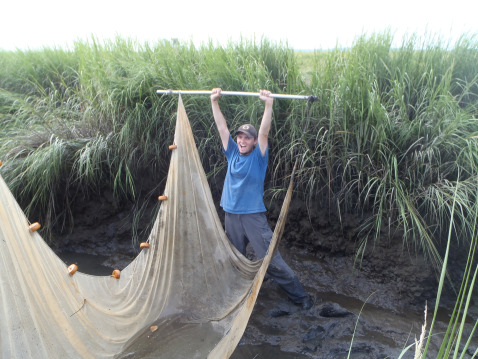
Welcome to the first (and probably only) issue of the Chog Blog! This week on the Chog Blog I have some great information to share with you about the lovable Mummichog! Known by scientists as Fundulus heteroclitus, it is a crucial secondary producer and primary predator in the salt marsh food web! But before we get too excited, I must share some background information about what we do here at TIDE and just how it ties into the daily life of a Mummichog.
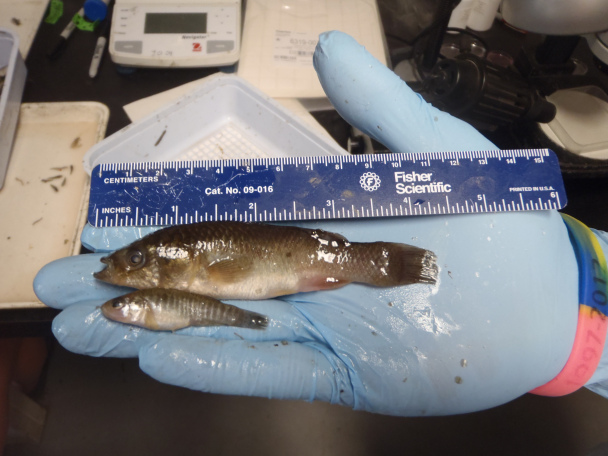
The TIDE Project’s objective for the past 9 years has been to add nutrients to salt marsh creeks of the Plum Island Sound in order to determine the effects of eutrophication on the ecosystem. My role this year as an REU has been to continue the research previously done and determine how eutrophication is affecting Mummichog productivity. In order to do so I had to collect data to determine the density/m2 and biomass/m2 as well as a seasonal growth rate.
To go about collecting the necessary data, there are a few different methods involved. The first bit of information that we want is what the densities of the fish are in fertilized and non-fertilized creeks. We employed 30m2 flume nets and trenched them into the marsh. The area that they enclose includes both types of habitat used by the Mummichog: high marsh and tall Spartina alterniflora (TSA). There are four of these nets on each branch of each creek which is a total of 24 flume nets. The fish and various other nekton were caught in these nets on the shoulder of the spring tides during June and July and have yet to be done again in August. The catch was then brought back to the lab where each individual organism was counted, weighed and measured to get the averages for each creek.
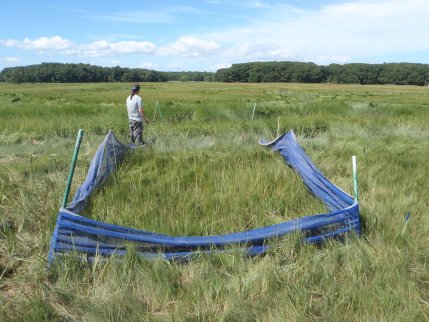
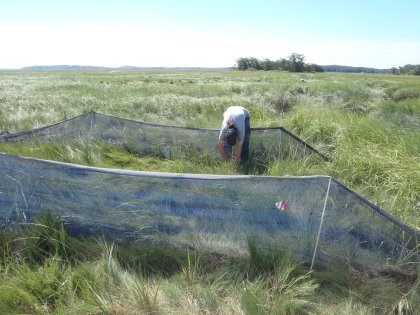
We have also conducted a length frequency analysis of Mummichogs to determine a relative growth rate for the season. For this, we used seine nets to catch approximately 1000 Mummichogs from each of the six creek banks. The fish were measured and the data entered into a histogram to visualize size classes and how they progressed from June to July. I must thank all the great REH’s that we had this summer: Nora, Molly, Patrick and Chris as well as budding marine biologist Jack who volunteered his time, for helping me tremendously with processing the oppressively large amount of Mummichogs that we caught!
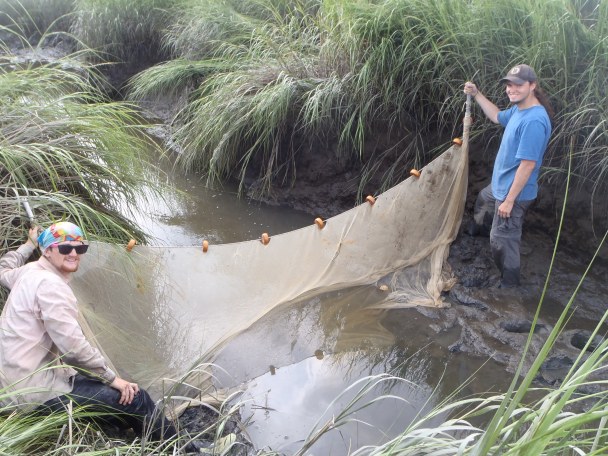
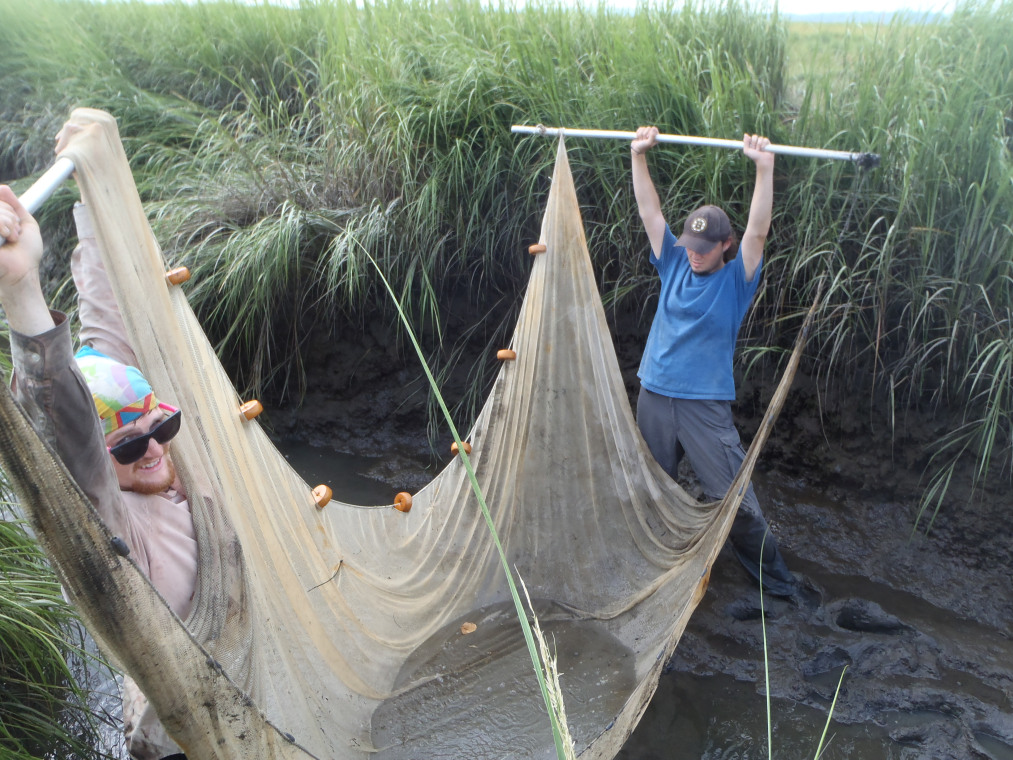
The final project that I worked on was analyzing gut contents of Mummichogs from five different size classes from each creek. The size classes were 30, 40, 50, 60, and 70mm. As close to twenty fish as possible from each size class were obtained from each creek and then cut open to examine their guts. The percentage of animal to vegetable matter in their guts was recorded and also any solid organisms that were identifiable. An interesting observation I made was that Mummichogs in the 60 and 70mm size class in the right branch of West were consuming Melampus coffea. One individual even had as many as nine snails in its gut! Wow!
Now I know you all saw this coming but I hate to say that this issue of the Chog Blog is coming to a close. I am currently in the final stages of data analysis and assembling some beautiful figures to sum up my findings. I’d like to thank everyone who helped me along with my field work and got my feet off the ground! I’d also like to thank you, loyal reader, for taking the time to learn about what I’ve done here with TIDE as an REU this summer!
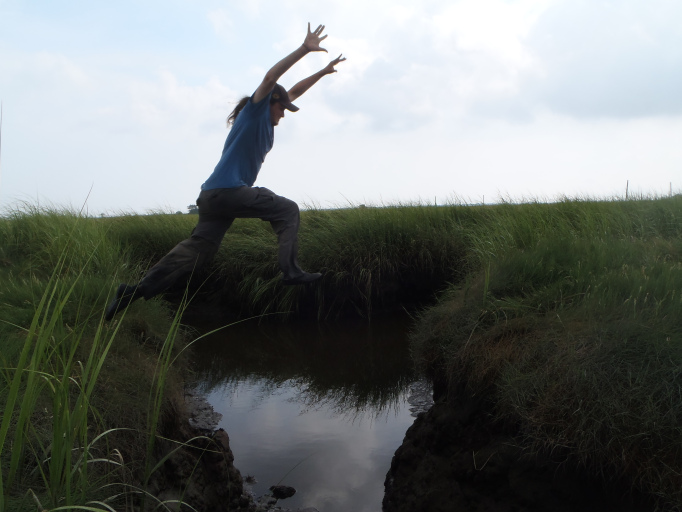
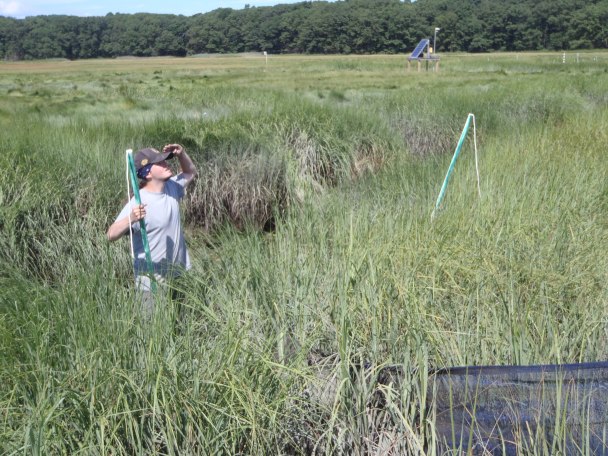
Leave a Reply